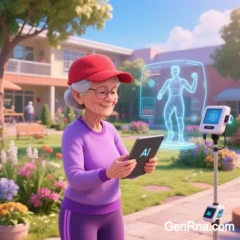CRISPR (Clustered Regularly Interspaced Short Palindromic Repeats) is a revolutionary gene-editing technology derived from a natural bacterial immune system.
Key points:
Uses a guide RNA to direct the Cas9 protein to cut specific DNA sequences.
Allows precise insertion, deletion, or modification of genes.
Applications: curing genetic diseases, improving crops, biomedical research.
Nobel Prize in Chemistry (2020) awarded to Doudna & Charpentier for its discovery.
It’s faster, cheaper, and more accurate than older gene-editing methods.

selfhealmat.com
Bioinspired Self-Healing Materials: From Molecular Design to Industrial Applications (As of May 20, 2025) I. Core Mechanisms and Classification Bioinspired self-healing materials mimic biological damage-response mechanisms, falling into two primary categories: 1. Extrinsic Healing Microcapsule/Vascu…

invivodelivery.com
In Vivo Delivery Technologies for Hematopoietic Stem Cell Editing: Applications and Advances (As of May 2025) I. Technology Platforms: From Lipid Nanoparticles to Targeted Delivery 1. Breakthroughs in Lipid Nanoparticles (LNPs) Antibody-Targeted Delivery: CD117-targeted LNPs (e.g., CD117/LNP-mRNA) e…

robosynai.com
AI-Driven Bio-Machine Hybrid Systems (RoboSynAI): Advances in Protein Design and Cell Factory Programming —Technological Convergence, Paradigm Shifts, and Industrial Breakthroughs In recent years, AI-driven bio-machine hybrid systems (RoboSynAI) have reshaped the foundational logic of protein engine…

BioAIGenome.com
BioAI Genome: Advancements in Alzheimer's Gene Therapy Development BioAI Genome, a cutting-edge platform integrating artificial intelligence (AI) and genomics, has demonstrated groundbreaking progress in accelerating gene therapy development for Alzheimer's disease (AD) and other complex conditions.…

curegenome.com
Genome Editing Therapies for Alzheimer's Disease and Age-Related Disorders: Current Progress and Future Directions Genome editing technologies, particularly CRISPR-Cas9 systems, have emerged as cutting-edge tools for treating Alzheimer's disease (AD) and other age-related conditions. By precisely mo…

GenomeEdit.com
Genome Editing in Longevity: A Multidimensional Intervention System Genome editing has evolved from a laboratory tool to an engineered platform for systematically extending healthspan by precisely regulating aging-related molecular pathways. As of 2025, its framework spans six core dimensions—from D…

Synthm RNA
Synthm RNA: Latest Clinical Advancements in Neurodegenerative Diseases and Progeroid Syndromes (As of May 2025) Synthetic messenger RNA (Synthm RNA) technology, which delivers genetic instructions to encode specific proteins, has become a revolutionary tool in treating neurodegenerative diseases and…

viralvectorai.com
Viral Vector-AI Convergence: Disruptive Innovations in Longevity Medicine (Systematic Review as of May 2025) The synergy between viral vector technology and artificial intelligence (AI) is redefining anti-aging research. Through breakthroughs in precision delivery, intelligent design, and dynamic re…

rnatools.com
RNA Tools for Longevity: Cutting-Edge Research and Clinical Applications RNA technology has emerged as a cornerstone of precision medicine, driving breakthroughs in anti-aging and lifespan extension. Below is a systematic overview of recent advancements, clinical applications, challenges, and future…

bioaidna.com
BioAI DNA: Advancing Precision Gene Regulation and Editing at the Intersection of AI and Synthetic Biology The deep integration of artificial intelligence (AI) and synthetic biology is reshaping the foundational logic of life sciences. By adopting a data-driven approach—precision design, intelligent…










